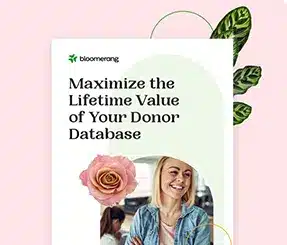How Organizational Management Can Transform Donor Relationships
Stronger Teams, Stronger Supporters


Full Platform Overview Chat With Us



Full Platform Overview Chat With Us




Donor relationships are at the heart of every successful nonprofit. These donor connections are established through similar values and loyalty to a cause. When supporters donate, they invest their trust in a charity and the people who carry out its mission. This is why developing and maintaining long-term relationships with donors is one of the most significant responsibilities of a fundraising team.
This article dives into ways organizations can strengthen their teams and internal dynamics to better serve their missions by sustaining stronger, more trusting donor relationships.
From database management to team communication, internal systems influence the donor experience at every interaction. When those systems break down due to miscommunication, unclear roles, or inconsistent messaging, supporters notice.
An overdue thank-you note, a misaligned appeal, or a clunky donation process can signal to a donor that your organization lacks cohesion. Over time, these tiny cracks can erode the trust you’ve worked so hard to earn as a nonprofit organization.
This is where developing organizational management internally can make your team stronger by focusing effort on a shared vision. This methodology provides a structured framework for intentional hiring, professional growth, and mentorship programs that help cultivate an empowered and inclusive culture of people who genuinely want to stay with an organization.
With strong organizational management, fundraising professionals can build systems that elevate the donor experience, encourage internal collaboration, and position their organizations for long-term sustainability.
Campaigns become more cohesive and compelling when fundraising, marketing, program, and operations teams understand their roles in the donor journey. Misalignment here can lead to mixed messages and a series of missed opportunities.
For instance, a development team might craft an appeal that doesn’t reflect the impact data the program team is sharing. Or, a donor might receive a stewardship message that conflicts with their giving history. These inconsistencies can deteriorate donor confidence.
Achieving internal alignment in fundraising starts with setting clear goals, defining key roles, creating feedback loops, and ensuring consistent messaging across every donor interaction. When departments work together with a unified voice, donors are more likely to feel seen, understood, and valued.
The notion of a “hero fundraiser,” someone who single-handedly drives revenue and manages every donor relationship, doesn’t reflect how effective fundraising truly works. In reality, strong donor relationships are built through collaboration across multiple teams. Finance ensures donations are processed accurately, communications craft messages that resonate, and operations maintain the donor-facing systems that keep everything running smoothly.
This broader view reframes fundraising as a team effort, where every role has a part in stewarding supporters. When donors receive a thank-you email, they don’t see the half-dozen people who collaborated behind the scenes to track donations and organize mailing systems, but it’s that unified experience that shapes their impression of your organization.
Embracing a team-oriented approach to fundraising elevates each member’s role by allowing them to focus more energy and attention on strategy and relationship-building.
Creating a culture that centers on the donor experience begins with a clear-eyed look at how your internal teams work together. Strengthening collaboration and accountability lays the foundation for more consistent, supporter-centered engagement. Here are a few practical steps to help guide the process:
Taking the time to strengthen your internal infrastructure pays dividends in the donor experience. When your team is aligned, equipped, and engaged, supporters notice, and their trust in your organization and its work grows.
Donors may never see your organizational chart or internal processes, but they will notice what comes from them. Supporters pick up on tone, timing, and consistency. If communications feel disconnected or stewardship seems reactive, they’ll wonder about the organization’s internal coordination.
Consistent messaging, timely acknowledgments, and clear impact reporting signal professionalism and care. These touchpoints show donors that they matter, their generosity is valued, and their involvement has meaning. On the other hand, even small inconsistencies can raise concerns.
A fundraising campaign without a timely update after the fact or disorganized communication around year-end impact can suggest an internal disconnect. However, when your internal infrastructure is strong, donors sense that alignment, and they’re more likely to keep giving, advocate on your behalf, and stay engaged long term.
Cultivating strong relationships is essential for any nonprofit organization. Acknowledging and thanking donors appropriately, communicating consistently, and maintaining a healthy internal infrastructure all contribute to a positive experience that encourages long-term commitment. It’s important to be transparent, genuine, and appreciative in every interaction.
Donors are the foundation of your impact and should be treated with care and respect. These strategies will help you build a loyal, engaged community that champions your mission for years to come.
Comments